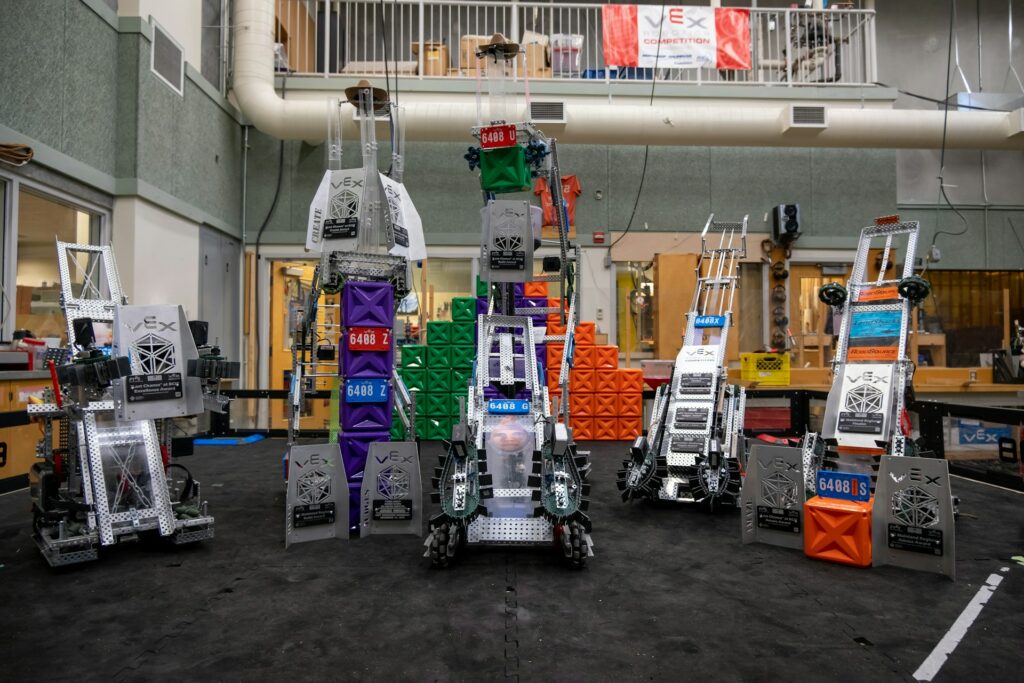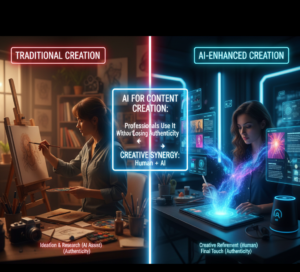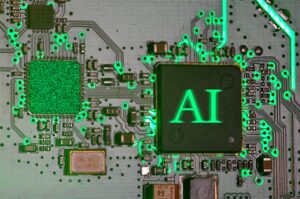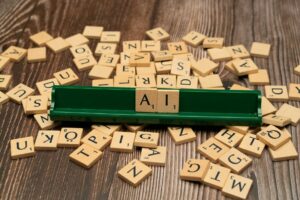Robotics Driven by Artificial Intelligence for Use in Automating Industrial Processes

Robotics Driven by Artificial Intelligence for Use in Automating Industrial Processes
Robots have been a key component in manufacturing, assembly, and logistics for many years, as the field of industrial automation has been developing over the course of decades. Nevertheless, conventional robots were not without their limitations. They were only capable of carrying out repetitive, pre-programmed activities in surroundings that were regulated. The field of robotics has acquired a new degree of intelligence, adaptability, and autonomy in today’s world, thanks to the integration of artificial intelligence (AI).
Robotics that are driven by artificial intelligence are revolutionizing industrial automation by giving robots the ability to learn, adapt, and work with people in situations that are both dynamic and complicated. This progression is having a significant impact on the future of a wide range of businesses, including those that deal with automobile and electronic manufacturing, logistics, and healthcare.
Industrial robots that are powered by artificial intelligence (AI) are referred to as AI-powered industrial robots.
Robots that are driven by artificial intelligence (AI) make use of machine learning, computer vision, and sophisticated decision-making algorithms in conjunction with conventional robotic gear. Robots that are endowed with artificial intelligence (AI) are capable of doing the following tasks, which are beyond the capabilities of traditional robots that depend on fixed programming:
Make use of sensors and computer vision to identify things and settings.
Make the necessary adjustments to accommodate fluctuations in the manufacturing lines.
With the passage of time, performance may be improved by learning from data.
When working in shared environments, be sure to collaborate securely with human workers.
Due to the fact that they replicate some characteristics of human intellect in industrial activities, these robots are occasionally referred to as cognitive robots.
1. Intelligent Manufacturing and Assembly: Some of the most important applications of AI-Powered Robotics in Industry
Robots that are powered by artificial intelligence are capable of carrying out intricate assembly duties that call for both accuracy and flexibility. They are able to adapt to minor deviations in the components or identify any flaws that occur when the assembly is being put together, for instance.
2. Inspection and Quality Control
Robots are able to examine things and identify defects with a higher degree of precision than the human eye, thanks to computer vision technology that is driven by artificial intelligence. They are able to discover flaws, measure measurements, and check that quality requirements are being met in real time.
3. Maintenance that is Predictive
Robots that are equipped with artificial intelligence (AI) and sensors that operate on the Internet of Things (IoT) keep track of the condition of equipment and make predictions about when repair will be necessary. This reduces the amount of time that is lost due to downtime and avoids problems that are expensive to fix.
4. Warehousing and Logistics
Robots that are driven by artificial intelligence are used for automated sorting, picking, and packaging. Through the use of computer vision, they are able to explore warehouses and optimize routes in order to maximize productivity. Artificial intelligence (AI) is transforming the way supply chain activities are carried out via the use of robotic arms and autonomous mobile robots (AMRs).
5. Collaboration between humans and robots (also known as “cobots”)
Collaborative robots, often known as “cobots,” are able to operate side by side with people without posing any safety hazards. They will be able to learn from human behavior, provide assistance with jobs that are ergonomically difficult, and increase productivity in the workplace without completely displacing employees if they use artificial intelligence (AI).
6. Environments That Are Dangerous and Pose a High Risk
Robots that are equipped with artificial intelligence (AI) may be used in hazardous situations like nuclear facilities, chemical plants, or areas with severe temperatures, which guarantees that operations are both efficient and safe for people.
Advantages of Artificial Intelligence in the Field of Industrial Robotics
Flexibility: Robots are able to adapt to new duties without needing substantial reprogramming.
- Productivity: Artificial intelligence (AI) enhances speed and minimizes waste in both the manufacturing and logistical processes.
- Cost Savings: Predictive maintenance and improved procedures are two methods that may be used to reduce operational expenses.
- Safety: Workplace accidents are reduced as a result of robots taking over hazardous or repetitive duties.
- Scalability: Intelligent automation makes it easier for businesses to expand their operations.
Examples from the Real World
Tesla employs robotic arms that are powered by artificial intelligence in the production of automobiles in order to ensure that welding and assembly are carried out with the utmost accuracy.
- Amazon: Utilizes warehouse robots that are powered by artificial intelligence to move merchandise and process orders.
- Fanuc is a company that develops robots that are powered by artificial intelligence and that enhance productivity via the process of learning from activities that have been completed in the past.
- ABB: Offers collaborative robots that are equipped with artificial intelligence capabilities for the purposes of assembly, packing, and handling of materials.
Difficulties in Industrial Robotics That Are Powered by Artificial Intelligence
There are a number of challenges that must be overcome before broad adoption may occur, even if there is a great deal of potential:
- Substantial Initial Investment: The cost of advanced AI robots and the infrastructure to support them may be significant.
- Integration with Legacy Systems: Artificial intelligence (AI) is difficult to integrate with the obsolete systems that are still used in many industries.
- Data Quality and Availability: Artificial intelligence is dependent on data of high quality, which is not always accessible in industrial settings.
- Workforce Transition: If employees are going to be able to operate alongside intelligent robots, they will need to get training.
- Cybersecurity Risks: Connected robots may be at risk of cyberattacks if they are not adequately protected.
The Future of Robotics in Industry Powered by Artificial Intelligence
Industrial robots will continue to become more independent, collaborative, and intelligent as artificial intelligence (AI) continues to improve. The following are some of the developments that are expected to occur in the future:
- Increased deployment of digital twins for the purpose of imitating robotic operations
- Real-time decision-making via the integration of 5G and edge computing technologies
- Enhancing the capacity of robots to adapt to new situations via the use of reinforcement learning
- The growth of collaborative robots (sometimes known as “cobots”) in small and medium-sized organizations (SMEs).
Not only will artificial intelligence (AI) driven robots revolutionize productivity, but it will also alter the whole nature of human employment, making it possible for individuals to take on more creative and strategic positions while machines carry out activities that are monotonous or dangerous.
The field of industrial automation is undergoing a transformation because to robotics that are driven by artificial intelligence. These robots are able to bridge the gap between inflexible automation and intelligent adaptation. These systems are used in a broad range of sectors, including manufacturing, logistics, and hazardous areas, and they provide increased efficiency, safety, and creativity in businesses all over the globe.
In spite of the fact that issues around integration, worker adaption, and cost continue to exist, it is certain that the future of industrial automation will be centered on intelligent robots that are powered by artificial intelligence. In the years to come, businesses who accept this transformation will be in a better position to compete, withstand challenges, and expand their operations.







